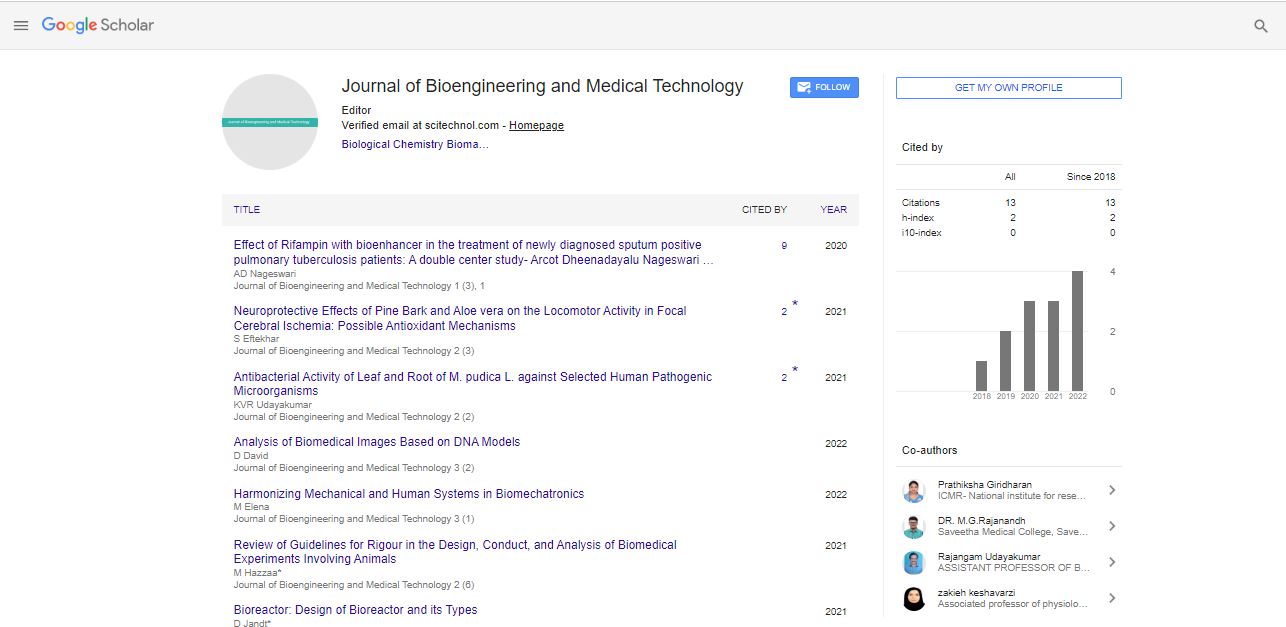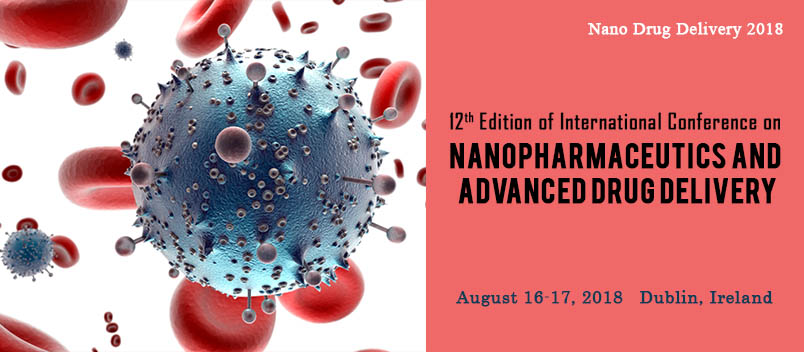Perspective, J Bioeng Med Technol Vol: 4 Issue: 2
Medical Robotics: Current Applications and Future Perspectives
Jessica Hyeon*
1Bioengineering and Biomedical Technology Department, Technical University of Munich, Munich, Germany
*Corresponding Author: Jessica Hyeon,
Bioengineering and Biomedical
Technology Department, Technical University of Munich, Munich, Germany
E-mail: Jessica@49hye.edu
Received date: 22 May, 2023, Manuscript No. JBMT-23-107450;
Editor assigned date: 24 May, 2023, Pre QC. JBMT-23-107450 (PQ);
Reviewed date: 15 June, 2023, QC No. JBMT-23-107450;
Revised date: 22 June, 2023, Manuscript No. JBMT-23-107450 (R);
Published date: 29 June, 2023, DOI: 10.35248/jbmt.1000080
Citation: Hyeon H (2023) Medical Robotics: Current Applications and Future Perspectives. J Bioeng Med Technol 4:2.
Description
Medical robotics has emerged as a revolutionary field, bridging the gap between technology and healthcare. The integration of robotics in medicine has resulted in numerous advancements, offering new possibilities for diagnosis, treatment, and patient care, exploring the current applications of medical robotics, including robotic surgery, rehabilitation, diagnostics, and telemedicine. Furthermore, it delves into the potential future perspectives of medical robotics, highlighting the challenges and opportunities that lie ahead in this rapidly evolving field.
In recent years, medical robotics has transformed healthcare practices, providing precision, efficiency, and safety to various medical procedures. These robotic technologies are designed to augment the skills of healthcare professionals and enhance patient outcomes, aiming to provide an overview of the current applications of medical robotics and its potential impact on the future of healthcare.
Robotic surgery has been one of the most significant advancements in the medical robotics domain. It enables surgeons to perform complex procedures with enhanced dexterity and visualization. The da Vinci Surgical System, for instance, has revolutionized minimally invasive surgery by providing 3D visualization and robotic arms with articulated instruments. The benefits include reduced trauma, faster recovery times, and improved patient outcomes. Ongoing analysis and development in this field aim to expand the capabilities of robotic surgery further, potentially leading to fully autonomous surgical systems.
Rehabilitation robotics has played a vital role in the recovery of patients with neurological or musculoskeletal disorders. Robotic exoskeletons assist patients in regaining motor functions and relearning movements through repetitive training and real-time feedback. These devices offer personalized therapy, quantifiable progress tracking, and the ability to adapt to patients' evolving needs.
As technology advances, rehabilitation robotics may become more accessible and affordable, benefiting a broader range of patients. The integration of Artificial Intelligence (AI) and robotics has paved the way for diagnostic robotics. AI algorithms analyze medical imaging data, allowing for faster and more accurate diagnoses of various conditions, such as cancer, cardiovascular diseases, and neurological disorders. Additionally, robotic systems aid in sample collection, improving the efficiency of diagnostic processes. As AI continues to evolve, diagnostic robotics will likely become an indispensable tool in clinical settings.
Medical robotics has facilitated telemedicine by enabling remote consultations and interventions. Robots equipped with cameras and sensors can be controlled by healthcare professionals from a distance, providing medical expertise to underserved areas or disaster-stricken regions. Moreover, telepresence robots offer solutions for long-term patient care, allowing medical staff to interact with patients virtually. These applications reduce the barriers to healthcare access and enhance medical services across geographical boundaries.
The future of medical robotics will undoubtedly witness an increased integration of AI, enabling robots to learn from data and adapt their actions based on patient-specific needs. AI-powered robotics will enhance decision-making, optimize treatment strategies, and potentially reduce medical errors.
Nanorobotics has the potential in targeted drug delivery and minimally invasive procedures. These microscopic robots can navigate the human body, detecting and treating diseases at the cellular level. Although still in the early stages of development, nanorobotics could revolutionize medicine by providing highly precise and personalized therapies.
Swarm robotics involves coordinating multiple robots to work collaboratively, much like a swarm of insects. In medical applications, swarm robots could perform tasks in unison, such as organ tranplants, by dividing complex procedures into simpler tasks. This approach has the potential to shorten surgery times and increase success rates.
Medical robotics advances, ethical and regulatory considerations must keep pace. Issues surrounding patient privacy, autonomy, and the potential displacement of healthcare workers need to be addressed to ensure the responsible and equitable use of medical robotics.
Conclusion
Medical robotics has already demonstrated its transformative potential in various healthcare domains, from surgery and rehabilitation to diagnostics and telemedicine. As technology continues to evolve, the future of medical robotics will have an immense scope. The integration of AI, nanorobotics, and swarm robotics is expected to revolutionize healthcare practices, providing personalized and efficient treatments. Nonetheless, challenges in ethics, regulation, and accessibility must be thoughtfully addressed to harness the full potential of medical robotics for the betterment of human health.
 Spanish
Spanish  Chinese
Chinese  Russian
Russian  German
German  French
French  Japanese
Japanese  Portuguese
Portuguese  Hindi
Hindi 
